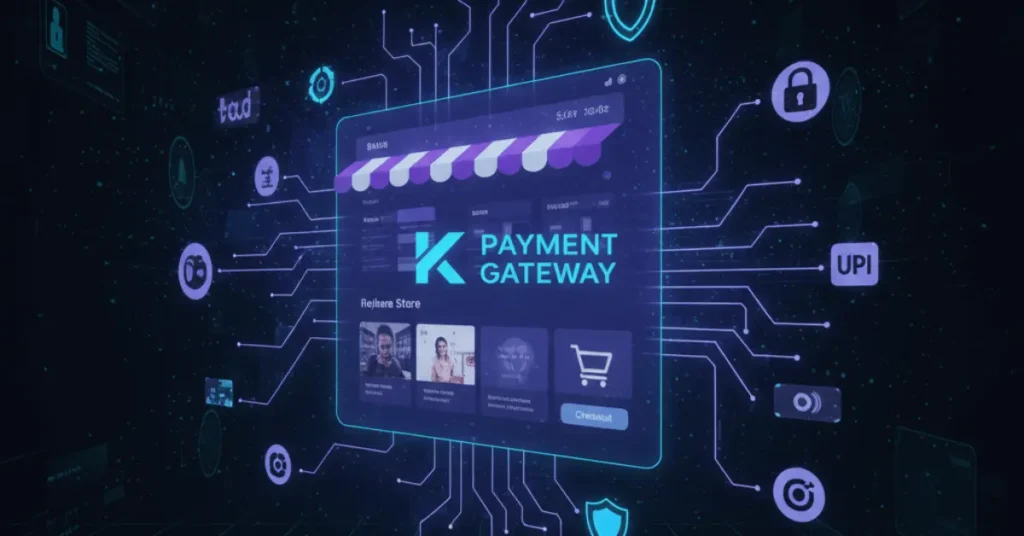WordPress website into an online store with a difference? Would you like that reality to be true one day. Then WooCommerce is probably just what you need: as if by magic you transform your web page into a super-smart shop (like Amazon) which people can use to sell and buy all kinds of products, whether they buy directly from you or it goes through an affiliate program. What is WooCommerce? It was initially released in 2011 by WooThemes.
What is WooCommerce?
Due to its flexibility and ease of use, WooCommerce quickly became the popular solution for online store developers. Being free and open sourced only helped to fuel its spread adoption amongst internet retailers. WooCommerce transforms a WordPress website into a fully functional online store, providing you with the ability to sell both digital and physical products. It turns your web site into a commissioning platform for all kinds of goods that can be bought and sold directly from the page itself, from their origin right up until now.
Key Features of WooCommerce
For many online merchants, WooCommerce seems as if it was made in heaven..It is an open-source eCommerce plug-in for WordPress which has so many features making it easy to manage a successful internet store. This post aims to delve deeper into some of the characteristics from which one can see when WooCommerce is best for someone launching this type of business or just taking over an existing one.
1. Seamless WordPress Integration
WooCommerce has a large number of advantages, but one of its biggest attractions is its complete compatibility with WordPress. If you are an experienced WordPress user, then you will find WooCommerce learns from the platform. This integration lets you take advantage of all the rich content management features in WordPress, while adding on robust e-commerce functions.
- Unified Dashboard: Control your store and your website from the same dashboard.
- Content-Driven Commerce: Add blog posts, landing pages, and other content effortlessly to support your products as well as marketing approaches.
2. Extensive Customization Options
WooCommerce is exceptionally reliable and tailorable, offering a vast array of options to customize and optimize your store so that it is just right for you.
- Themes: Choose from over a thousand free and premium themes – each one is different.
- Extensions and Plugins: Your store functions can be extended with a variety of plugins or extensions, such as an array of payment gateways to shipping options all over the world.
- Custom Code: For developers WooCommerce provides full customization via hooks, filters and REST API endpoints.
3. Robust Product Management
WooCommerce provides a full set of tools to help you manage all aspects of your product inventory efficiently.
- Multiple Product Types: You can sell physical goods, digital downloads, subscriptions, and more.
- Product Attributes and Variations: Define specific attributes for example size, color but also get variations on this theme within your products
- Inventory Management: This section allows you to track stock levels for different items as well as set a small inventory notification and the ability to hide items that are not in stock.
4. Flexible Shipping Options
Shipping is a crucial part of e-commerce and WooCommerce has numerous flexible shipping solutions on offer.
- Zones for shipping: Define shipping zones and charge different rates based on the customer’s location.
- Classes of shipping: To simplify rate calculations, group products with similar shipping requirements.
- Real-time Estimates: Work with the large carriers such as USPS, FedEx, and UPS to give real-time shipping rates plus tracking.
5. Multiple Payment Gateway Integrations
This makes it possible for you to offer your clients the payment methods that they prefer.
- Popular payment gateways include the leading providers like PayPal, Stripe and Square.
- Local payment options: To better satisfy international trade needs, different places have to endure various payment systems.
- You can confidently make transactions using built-in SSL equipped and compliant with PCI-DSS.
6. Built-In Analytics and Reporting
It is critical that you understand your store’s performance; WooCommerce has strong analytics and reporting tools equipped right out of the box.
- Sales Reports: You can track total sales, average order value, and other key metrics relevant to an e-commerce platform alone
- Customer Insights: Learn about customer behavior patterns in order increase return customers from scratch and move them into the purchase funnel
- Export Options: With the sophisticated data analysis from running your store on WooCommerce, you can export it for more in-depth research or integrate with other tools that also support similar functions.
7. Comprehensive Tax Management
Tax management and navigating tax regulations is hard, but WooCommerce makes it easy.
- Automatic Tax Calculation: Taxes based on store and customer locations are automatically calculated.
- Multiple Tax Rates: Different tax rates for different regions and product types are supported.
- Tax Display Options: Depending on both your preference as well as the requirement of customers, prices can be shown with or without tax.
8. SEO-Friendly
With SEO best practices incorporated from the ground up, your store will appear higher in (SERP) pages.
- SEO Plugins: Partner up with popular SEO plugins such as Yoast SEO in order to tweak the details of your product pages.
- Clean URLs: Search engine-friendly URLs for all your products and categories.
- Meta Information: Meta titles, descriptions and keywords can be added in mere seconds, turbocharging the search visibility of your website.
9. Mobile-Friendly Design
With a growing number of people Shopping on mobile devices, having a mobile-optimized store is crucial.
- Responsive Themes: Choose from Themes that are all Device friendly.
- Mobile Optimization: Largest Mobile Optimization in AliExpress
- Mobile Apps: For iOS and Android Our latest Apps for mobiles mean you can now manage your shop as well as order new stock when out of the office.
10. Strong Community and Support
The vast and active WooCommerce community provides abundant information and assistance on any query a user might have.
- Documentation: You can access We release new Help Center items on a regularly updated basis dedicated to literally every aspect related to WooCommerce
- Forum and Groups: Join forums and social media groups so that you can communicate with other WooCommerce friends, discuss all kinds of issues facing our products, your company as a whole or simply enjoy being part of a big happy family from somewhere around our great earth.
- Professional Support: Users can connect with WooCommerce experts for official support channels met by specifically trained developers.
11. Enhanced Security Features
Protecting customers and business is top priority for any online store, and WooCommerce offers a number of features to do this.
- Regular Updates: get in on the security patches and weekly updates now!
- Secure payments: ensure safe transactions through SSL certificates and by complying with industry standards.
- Security plugins: enhance security still further thanks to those plugins that give you yet another layer of protection, and offer firewalls or virus scanners in particular.
12. Multilingual and Multi-Currency Capabilities
WooCommerce with its multiple languages interface is perfect for the world crowd.
- Translation ready: like WPML plug-in, to diversify stores into different languages.
- Currency switchers: Customers may see prices in their favoured currency and pay that way.
- Geolocation: Automatically detect customer location and show the appropriate language, plus currency sign.
Benefits of Using WooCommerce

To keep up with the trend, the one key point is that you can’t afford to be stymied by bad software. Choice Of e-commerce platform hardwareWith the customers as the starting point to develop a web or mobile software, your choice of that site’s technological platform becomes a lot more important than whether it joins YouTube or does not.
WooCommerce, as a popular e-commerce plugin for WordPress, emerges as the first choice for many online retailers.Often, there is more than one javascript library that can support everything you want to do on your site; as far as I know, people have not yet changed standards because they found world clarity
On WooCommerce’s website, they do point blank that if you use their service as an apple tree then there is still no guarantee you will get fruit: you have faith or not, and that’s really the key point behind all this.WooCommerce and the possible benefits of traditional businesses could facilitate its present successIn this blog post, we’ll take a look at some of the amazing from Wal Mart technologies used.
1. Cost-Effective Solution
One of the main benefits of WooCommerce is that it’s free. Running an eCommerce business on WooCommerce platform, there are no monthly fees to pay whatsoever, just the bill for your domain and hosting costs only–which is made up of separate companies anyway.Whatever you may or may not need in terms of premium themes, extensions or hosting, at least it’s all within reason for most people. The total cost is therefore nowhere near and often significantly lower than many other competitive products in the ecommerce space today. So whatever your budget, whether big or small, try out WooCommerce Business Edition now.
2. Seamless Integration with WordPress
WooCommerce is a natural complement to WordPress, the world’s most popular content management system (CMS). If you use WordPress for your website or blog already, adding WooCommerce is easy. A single dashboard makes it possible to manage everything from content marketing to customer orders and service requests.
3. High Customizability
You have the power to adapt the store with all sorts of custom-made sections to meet your exact wishes. There are a variety of themes from which you can choose to give your store distinctive appearance complementary and chargeable. In addition, WooCommerce has many add-ons and plugins that drastically widen the field of its functions.
Supports advanced shipping solutions as well as other features not supported by default such as software warehouse systems like this one or most retailers running bill payments through their web sites can easily use payment gateways in tandem with WooCommerce placing orders online without any hitches whatsoever!
4. Flexibility in Selling Various Products
Whether it is physical products, digital downloads, subscriptions or appointments, WooCommerce can cope with all these.The various types of products that WooCommerce supports all feature multiple options for inventory management and attributes associated to their specification, making it wide-suitable for a range of businesses.
5. Extensive Payment Gateway Options
WooCommerce provides built-in support for multiple payment gateways and out-of-the-box you can accept money over the internet with such popular options as PayPal, Stripe or Square. Plus, regional moreover specialized payment processors are being added often. Giving your customers even more ways to pay securely.
6. Robust Shipping Capabilities
You undertake so much hard work when you have an internet shop, and shipping is one of the worst aspects. But it’s all easy with WooCommerce flexible shipping options, turned out: you can give free-shipping if you’re feeling generous; flat rates of postage regardless where on this Earth they need to go- whatever makes life easier for you shipping cost based on either weight or shape completely free of charge. Use real-time shipped rates with major shipping carriers. Also, track your packages if you ship with them – all to ensure that everything goes well and the customer has good experience overall.
7. SEO-Friendly
When building WooCommerce, the developers make sure to adhere to the best practices in Search Engine Optimization. Not only is your store guaranteed high search engine rankings, but integration with popular SEO plugins such as Yoast SEO will also help you bring it to a larger audience through search engine results and attract more traffic organically.
8. Mobile-Optimized
In today’s world, people use mobile devices on a daily basis. Having a mobile-friendly website will make all the difference. WooCommerce themes are designed to be responsive, so your store will look as much like it’s supposed to on other devices like smartphones and tablets. Such optimization can lead to better user experiences and more conversions too.
9. Scalability
WooCommerce can be used to set up growing businesses that start small and go huge. Modular architecture ensures that you can begin with the essentials and expand your e-commerce site at any time. WooCommerce can handle thousands of products and high volumes of visitors. It’s just the thing for businesses big or small.
10. Strong Community Support
WooCommerce has a large, active community of developers, designers and store owners. This means you have a huge pool to draw on time and time again in making things happen. Resources are plentiful, including tutorials, forums, and documentation. For help with troubleshooting or advice on getting your store to look good, there is no end of knowledge waiting out there in the WooCommerce community.
11. Enhanced Security
Security is never a secondary concern on the Internet.If you go with us, you need never worry about the smooth operation of your web site and can engage happily in bartering.WooCommerce is a platform that security experts test every day to make sure it’s totally secure. It allocates secure payment options and supports SSL certificates, letting customers shop with confidence.
12. Detailed Analytics and Reporting
WooCommerce provides comprehensive analytics and reporting tools so that you can track sales figures, what customers are doing and the performance of your store. From this information you can make an educated guess about where your ventures will take place in the future.
13. Complete Control and Ownership
With WooCommerce, you own every part and have full management of your store. Unlike other SaaS solutions, WooCommerce is self-hosted so you own all data rather than being held captive by one supplier or another. This means that no matter what service provider is used, it gives you the freedom to tailor how you want your shop to look and function exactly the way that feels right for you.
14. Integrated Blogging
Content marketing can be a great way to drive people into your store – and the really robust blogging capabilities of WordPress shine as an add-on for WooCommerce. By integrating your store with a blog, there is now no excuse not to produce engaging content or fiddlesome text that will improve your SEO score and, in short, take you from the crash-and-burn kind of online business into one with a loyal audience.
How to Get Started with WooCommerce

A good choice for an online store is WooCommerce. This free plug-in for WordPress websites gives you a powerful and flexible system to sell a variety of products at many price ranges without difficulty. That’s why WooCommerce has been used by over a million websites!Inside this guide, we ‘ll show you what all the fuss is about! We’ll start from scratch and guide you through getting your own WooCommerce store up online.
Step 1: Set Up Your WordPress Site
Once you have a wordpress site, you can use WooCommerce to begin selling.
Here’s the process:
Choose a Hosting Provider
- Choose a reliable hosting provider that supports WordPress. NameCheap is a popular option, as is Bluehost and DreamHost. There’s one-click WordPress installation with all these options, so set-up is easy.
Install WordPress
- After you’ve selected your hosting provider, follow their instructions on how to install WordPress for your particular domain. Most hosting services come with a guided, step-through installation process.
Configure Basic Settings
- When you log into your WordPress dashboard after installing this software, you will be ready to go to “Settings> General” in order to start thinking of things like a catchy site title and maybe include any social add-ons
Step 2: Install WooCommerce
Once your WordPress site is up and functional, it’s time to add the WooCommerce plugin.
Access the Plugin Directory
- From your WordPress dashboard, go to Plugins > Add New. In the search bar, type “WooCommerce.”
Install and Activate WooCommerce
- Find the WooCommerce plugin and click “Install Now.” Once the installation is complete, click “Activate.”
Follow the Setup Wizard
- On activation you will first go through a setup wizard which guides you setting up the most important features after
- Store Details: State your address, currency and desired units for weight etc. Again choose
- Payment Methods: Elect what payment methods you wish to offer; whether this be PayPal or Stripe via credit card payments and everything in between from bank transfers, cash on delivery etc.
- Shipping Options: This is even where setting up shipping methods and rates takes place. You can do it via the plugin choice that occurred first when you are in this section, or just add
- Additional Plugins: Some of these perhaps could be: for buying stuff like this in multiple currencies at once on a single page – WordPress Currency Switcher; a plug-in which allows your blog sound “better” visually by appending So Hot To Buy Buttons and add notes such as “Just been released!” to footer areas. All of which can help extend your store’s functions.
Step 3: Choose a Theme
A good online store is essential for enticing and holding onto customers.Virtually every wordpress theme is perfectly compatible with WooCommerce.
Select a Theme
- You can pick from free themes, or even premium themes that connect with WooCommerce. Popular free themes include Storefront (developed by WooCommerce) and Astra. Premium themes can be found at marketplaces like ThemeForest.
Install and Activate Your Theme
- Install To install a theme, navigate to the theme from the submenu in your WordPress dashboard (Appearance – Themes -add new).Search for your chosen theme> Then install and activate it.
Customize Your Theme
- Once activated, go to Appearance > Customize to modify the theme’s settings. Customize the layout, colors, typography, and other elements to match your brand.
Step 4: Add Products to Your Store
Now that you have set up WooCommerce, you need to add product items.
Navigate to the Products Section
- In your WordPress dashboard, go to Products > Add New.
Enter Product Details
- Fill in the details for your product, including:
- Product Name: Fill in the name of your product.
- Description: A complete introduction to the product concerned.
- Product data: Specify the product type (simple, variable, grouped, external/affiliate), price, SKU (stock keeping unit), stock status and other attributes.
- Short description: A short description of the product that appears next to the title.
- Categories and Tags: Help organize your products in categories or using tags for easier navigation.
- Product Image: Upload a high-quality image of the product.
- Product Gallery: Insert additional images to display various angles or versions of the product.
Publish Your Product
- Once you’ve entered all the necessary information, click the “Publish” button to make your product live in your store.
Step 5: Configure Store Settings
Fine-tune your store settings to ensure a smooth shopping experience for your customers.
General Settings
- Go to WooCommerce > Settings > General to configure basic settings such as store location, currency, and measurement units.
Product Settings
- Under WooCommerce > Settings > Products, you can manage settings related to product pages, inventory, and downloadable products.
Tax Settings
- The setting interface for taxes in WooCommerce is simple to use. Go to WooCommerce >Settings > Tax and set up tax rates based on the location of your business and the locations of customers.
Shipping Settings
- Setting up shipping in WooCommerce >Settings > Shipping means zones, methods and rates. This setup lets you give customers many different options for where their products should be sent.
Payments
- Under WooCommerce >Settings > Payments, configure your payment gateways. Here you can set the method of paying money and click your choice of whether or not to accept payments via telephone. Commonly chosen methods of payment such as PayPal, Stripe (credit card) and direct bank transfers are all able to be turned on for input.
Step 6: Enhance Your Store with Extensions
WooCommerce lets you extend your shop by adding useful features and functions. Extend Your ShopAdd Extensions
Explore Extensions
- To browse extensions that are available visit the WooCommerce Extensions Shop. Popular extensions are WooCommerce Subscriptions, WooCommerce Bookings, WooCommerce Memberships.
Install Extensions
- If you need to install an extension first go to the WooCommerce marketplace and buy it. After that you can download the plugin file and upload it to your site via Plugins > Add New > Upload Plugin. Activate the plugin as always and configure its settings as required.
Step 7: Launch and Promote Your Store
Ready to launch Once you ‘ve finished setting up your store and adding products.
Test Your Store
- Before you switch from “under construction” signs to actually being open, put your shop through a series of tests. Take a few fake orders and review the checkout process, check that all links and functions are working well.
Launch Your Store
- Once you have complete confidence that everything is running properly, you can open your store. Let your social media followers and subscribers to your email newsletters get the word out as soon as possible in their turn these two can also aid in making announcements through Facebook advertising campaigns.
Optimize for SEO
- Use SEO plugins like Yoast SEO to optimise your product pages and blog posts. Improved Visibility of Store in Search Engine Results with Good SEO Practices
Implement Marketing Strategies
- Use various marketing strategies to drive traffic to your store, including social media marketing, content marketing, email campaigns, and pay-per-click ads.
Conclusion
WooCommerce is an excellent way of building online stores offering total flexibility and affordability in costs.There are myriad features, more possibilities than use the scope for building sites; and small businesses of all sizes can use it equally effectively.!If you’re only just starting to develop a business online or extending your existing talents into this area, WooCommerce provides all the help you need. Do resources get”Leveraging the success of WooCommerce, you’re able to craft a vibrant online store that perfectly matches your customers and keeps the money coming in.
FAQs
What is WooCommerce used for?
You are able to use WooCommerce, for Plugin. On a WordPress site to sell articles or services through its powerful store management user platform! But with it, an online storefront could be quickly put together–so simply that even me, who has never had education in the ecommerce field at all would be able to get a site up and running.
Is WooCommerce completely free?
The basic program is free, however (normally) you will still be adding to this many extra expenses: such as a certain number for a theme or extension; an amount due hosting. Although if that thing hasn’t occurred to a Signup Genius founder of illogical organization also very effectively intelligent does still take this view.
Why is Shopify better than WooCommerce?
We often think of Shopify as being better for its ease of use, all-in-one platform, and dedicated support, while WooCommerce offers more freedom and control. Having separate issues of each topic I’m puzzled. Sometimes only a very little stroke separates two pictures, people tell me and sometimes you have to get a microscope out to see why this was done.
Is WooCommerce a payment gateway?
No, WooCommerce itself is not a payment gateway. However, it does work with many payment gateways, such as PayPal and Stripe, to take care of your finances.
Is WooCommerce good for SEO?
Ah, no wonder so many of you guys think it’s a SEO friendly CMS! WooCommerce is based in WordPress. Only a few such things are supported on other platforms, and none in the way WordPress supports them–you can install any Black & Decker tool box or Troisi Euro software here.
















